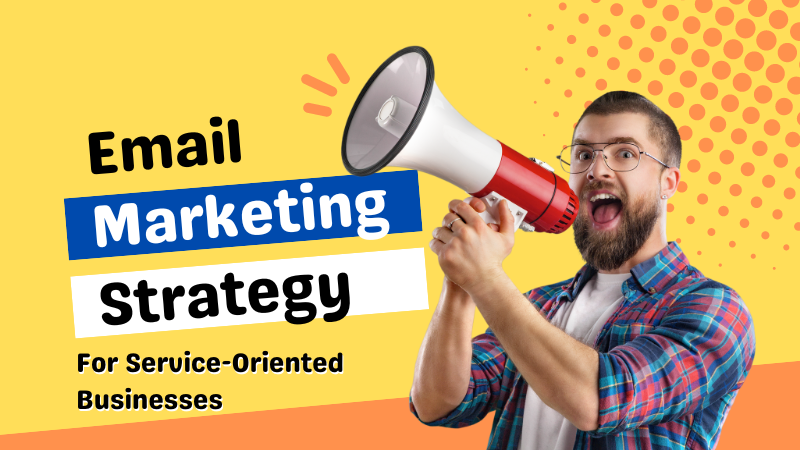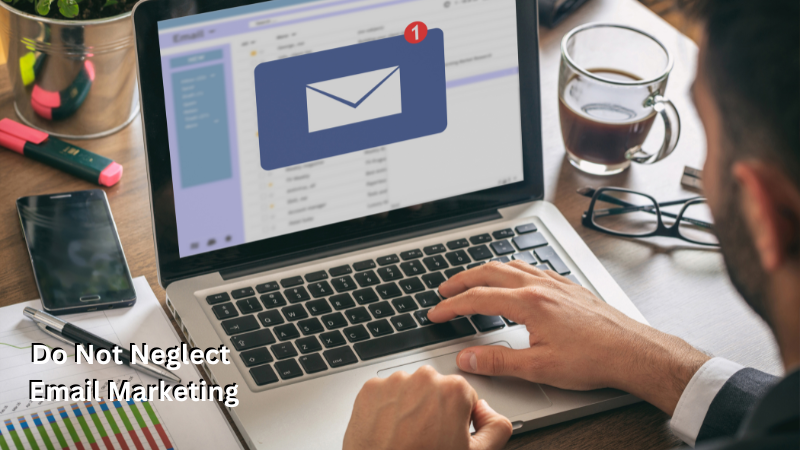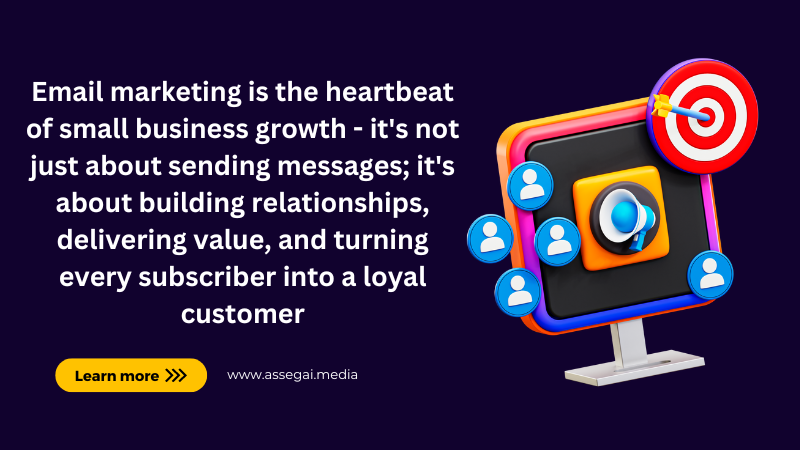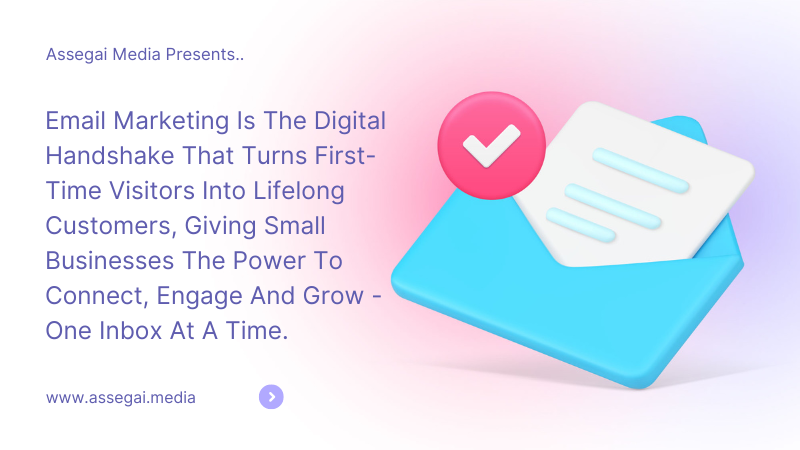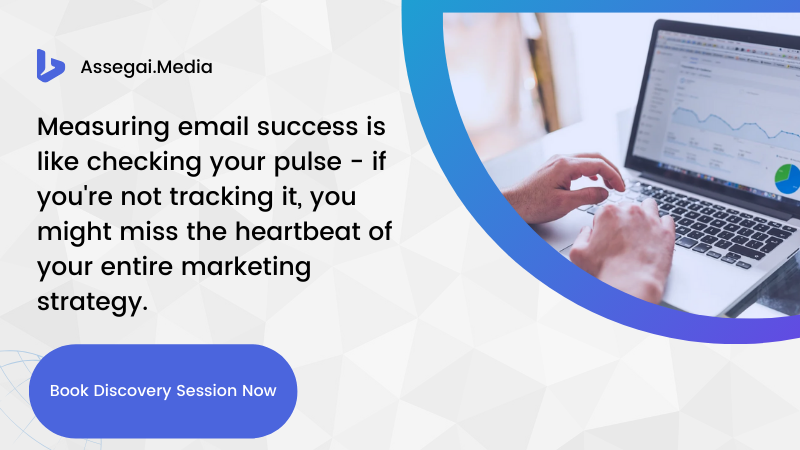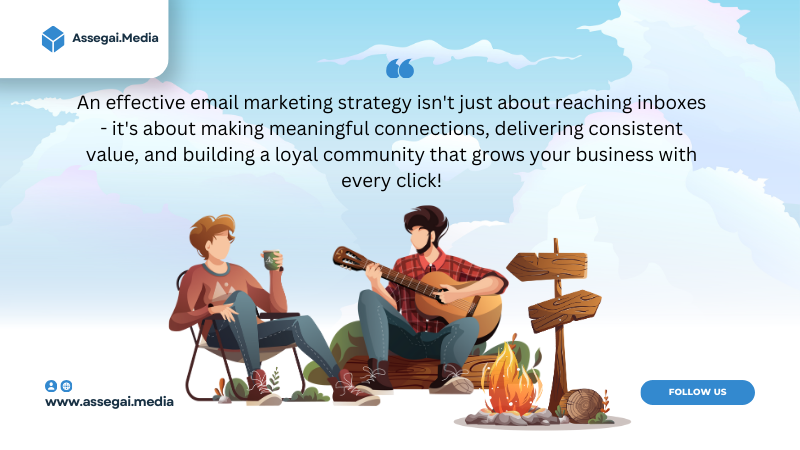Introduction to Email Marketing Strategy for Service-Based Businesses
What is Email Marketing?
Imagine having a direct line to your potential customers, a line that bypasses the noise of social media and lands directly in their inbox. That’s email marketing in a nutshell.
It’s the art of sending targeted messages to your audience via email, with the goal of nurturing leads, building relationships and ultimately, driving sales.
For service-based businesses, email marketing strategy therefore isn’t just another tool – it’s a game-changer!
Why Email Marketing Strategy is Essential for Service-Based Businesses
So, why should service-based businesses prioritize an email marketing strategy?
Because it’s one of the most cost-effective methods to maintain consistent, meaningful communication with clients.
Whether you’re a Dentist, Consultant, Chiropractor or Yoga instructor, a strategic email marketing approach helps you stay top-of-mind with your audience, delivering valuable content and promoting your services in a way that feels personal and direct.
Moreover, it’s highly scalable, making it ideal for businesses aiming to grow and expand their reach.
By implementing a well-planned email marketing strategy, you ensure that your communications are targeted, timely, and aligned with your business goals, ultimately driving sustained success.
The Benefits of an Exceptional Email Marketing Strategy
Building Relationships with Your Audience
Think of your email marketing strategy as the digital equivalent of a cozy, friendly check-in.
Imagine it like popping into your client’s inbox for a quick chat over a cup of virtual coffee. It’s not just about saying “hi” – it’s about building and nurturing relationships with potential and existing clients, and trust me, people notice when you show up regularly with something valuable to say (just like a good friend who always has the best gossip).
By consistently providing content that’s as useful as it is delightful, you’ll establish trust – the golden foundation of any successful business relationship.
And when it comes to business, trust is like the secret sauce that keeps customers coming back for more. With the right email marketing strategy, you’re not just another name in their inbox; you’re that reliable friend who’s always there with advice, tips, and maybe even a cheeky discount or two.
Driving Consistent Leads and Sales
Ever notice how some businesses seem to have a steady stream of clients, like they’ve got some kind of magic formula?
Well, spoiler alert – they do, and it’s called a killer email marketing strategy.
Picture this: you’ve got an audience that’s hanging on your every word, eagerly awaiting your next email like it’s the season finale of their favorite show.
With timely offers, promotions and gentle reminders, you’re not just engaging your audience – you’re practically leading them by the hand to your services.
An effective email marketing strategy works like a well-oiled machine, continuously driving traffic to your services and converting casual interest into solid bookings. It’s like having a secret weapon that keeps your business front and center, ensuring that when your clients need something, you’re the first name that pops into their heads.
Consistent leads, steady sales and all from a few well-crafted emails – who knew marketing could be this much fun?
Cost-Effective Marketing Strategy
Let’s be honest – marketing can get pricier than a gourmet avocado toast habit.
But here’s where your email marketing strategy shines like a knight in digital armor, swooping in to save the day (and your budget).
For the cost of, well, almost nothing, you can reach a vast audience, share your wisdom and promote your services – all without breaking the bank.
Compared to other forms of advertising, email marketing’s like finding a hidden gem at a thrift store.
You get maximum impact for minimal spend, with an ROI that would make any accountant smile. And let’s not forget about automation – the holy grail of efficiency.
With the right email marketing strategy, you can set it and forget it, letting your emails work their magic while you focus on other aspects of your business (or, you know, finally binge-watching that show everyone’s talking about).
In essence, a solid email marketing strategy is like the Swiss Army knife of your digital marketing toolkit. It’s versatile, reliable and incredibly cost-effective, making it an absolute must for any service-based business looking to grow without burning through their budget.
So, if you haven’t already started crafting your email marketing masterpiece, now’s the time.
Your audience (and your bank account) will thank you.
Getting Started with Your Email Marketing Strategy
Choose the Right Email Marketing Platform
Alright, let’s kick things off with the basics.
Before you can start sending those brilliantly crafted emails that will have your audience clicking “open” faster than they hit snooze on their morning alarm, you need the right platform to make it all happen.
Think of it as choosing the perfect stage for your performance – after all, you wouldn’t want to belt out your best notes in a closet, right?
Platforms like Mailchimp, ConvertKit, and ActiveCampaign are like the rockstars of the email marketing world.
They come packed with user-friendly interfaces (because no one has time for a tech headache), powerful automation features (hello, time-saver!), and analytics that let you track every click, open and conversion like a hawk.
The best part?
There’s a platform out there for every budget and business need, so whether you’re just starting or ready to go full throttle, you’ll find your perfect match.
Building and Growing Your Email List
Now, let’s talk about the golden goose of your email marketing strategy – your email list.
This, my friend, is where the magic happens.
Building an email list from scratch might feel like trying to grow a garden in the desert, but trust me, it’s not only possible – it’s essential. Think of your email list as your direct line to potential customers, a place where you can nurture relationships and turn curious onlookers into loyal clients.
So, how do you entice people to hand over their precious email addresses?
Simple – offer them something they can’t resist.
Maybe it’s a free consultation that’s too good to pass up, a downloadable guide that solves their biggest problem, or a discount that makes them say, “Where do I sign up?” The key’s to provide value upfront, so they feel like they’re getting something worth their while.
Once you’ve got that value-packed offer in place, watch those email addresses roll in like confetti at a parade.
Creating an Opt-In Form that Converts
Your opt-in form is the gateway to your email list, so you want it to be as irresistible as a freshly baked cookie.
But here’s the thing – people won’t hand over their email address for just anything. You’ve got to make it clear what’s in it for them, and you’ve got to keep it simple.
For example, “Join our email list for exclusive tips and discounts!” is like a siren call to your audience, while “Subscribe to our newsletter” is…well, kind of meh.
The more specific and enticing you can be, the better.
Remember, the goal’s to make signing up feel like a no-brainer, something they’d be silly to pass up. And once you’ve got them hooked, that opt-in form will be the gift that keeps on giving.
Crafting Your First Emails
Writing a Compelling Welcome Email
Ah, the welcome email – the digital handshake that sets the tone for your relationship.
Think of this as your first impression, the one chance you have to dazzle your new subscribers and make them think, “Wow, I’m so glad I signed up!”
No pressure, right?
Here’s how to nail it: start by introducing your business in a way that feels warm and personal.
Thank them for joining your list (because manners matter, even in the digital world), and give them a taste of what’s to come.
Maybe you’ll share your story, tease some upcoming content, or offer a special discount as a thank-you.
Whatever you do, don’t forget the all-important call-to-action (CTA). Whether it’s booking a service, downloading a resource, or following you on social media, make sure your readers know what the next step is – and make it easy for them to take it.
Planning Your Email Content
When it comes to planning your email content, balance is the name of the game.
Imagine your email marketing strategy as a fine meal – you need a little bit of everything to keep your subscribers satisfied.
Too much promotional content, and they’ll feel like they’re at a sales pitch; too little, and they might forget why they signed up in the first place.
So, what’s the perfect mix?
Aim for a blend of educational content (like tips, insights, and how-tos) and promotional content (like special offers, product updates and service highlights).
The goal’s to keep your audience engaged, informed, and ready to take action – without feeling overwhelmed or underwhelmed. And remember, the best email marketing strategies aren’t just about selling – they’re about building relationships.
Balancing Promotional and Educational Content
Think of your email content like a conversation with a good friend.
You wouldn’t just talk about yourself the whole time (unless you’re that friend), but you also wouldn’t shy away from sharing something exciting in your life.
It’s all about balance.
In the context of email marketing, this means alternating between educational content that provides value – like industry tips, helpful advice, or interesting insights – and promotional content that highlights your services.
The key is to keep things engaging and informative, so your audience feels like they’re getting something out of every email. This not only keeps them coming back for more, but it also primes them to take action when you do have something to sell.
By crafting a well-rounded email marketing strategy that mixes education with promotion, you’ll create a loyal following that’s not just interested in your emails – they’re eagerly awaiting them.
Segmentation: Personalizing Your Email Marketing Strategy
What is Segmentation?
Let’s be real – sending the same email to your entire list is like throwing a one-size-fits-all sweater at a crowd.
Sure, it might fit some people, but others will end up looking like they’re wearing a shapeless sack!
That’s where segmentation comes in.
Segmentation’s the art of dividing your email list into smaller, more targeted groups based on specific criteria like demographics, interests or behaviors. Think of it as the secret sauce that transforms your generic emails into personalized, can’t-wait-to-open messages that resonate with each recipient.
Why bother with segmentation?
Because not all your clients have the same needs, and the days of one-size-fits-all marketing are long gone.
By segmenting your list, you can tailor your messages to speak directly to different groups, making your emails feel like they were crafted just for them.
It’s like having a conversation with a friend who totally gets you – way more engaging than a generic mass message.
How to Segment Your Email List
So, how do you start segmenting your email list without turning it into a Rubik’s Cube of confusion?
Start by identifying key segments within your audience.
For instance, you might create segments based on location (because what works in New York might not fly in Nebraska), purchase history (because repeat customers deserve VIP treatment), or engagement level (because let’s face it, some folks need a little more convincing).
Once you’ve got your segments, it’s time to tailor your emails to each group.
A client who’s booked your services before might appreciate updates on new offerings or a thank-you discount, while a fresh subscriber might be more interested in learning about your brand’s story and what you can do for them.
The more relevant your content is to each segment, the more likely your emails are to hit the mark – and the “buy now” button.
Examples of Effective Segmentation
Let’s say you’re a consultant with a diverse clientele.
You could segment your email list into categories like “small business owners,” “freelancers,” and “corporate clients.”
Each of these groups has unique challenges and needs, so why not speak to them directly?
For small business owners, you might share tips on scaling their operations without losing the personal touch. Freelancers on the other hand, might appreciate advice on managing multiple clients and setting boundaries.
Corporate clients?
They’re all about efficiency, so give them strategies to streamline their processes and boost productivity.
By tailoring your content to each segment, you’re not just another email in their inbox – you’re the email they actually want to open. And that’s the kind of engagement that turns subscribers into loyal clients.
Automating Your Email Marketing Strategy
The Power of Automation in Email Marketing
Imagine setting up a series of emails that do all the heavy lifting for you while you sip your morning coffee (or wine—no judgment here). That’s the magic of automation.
With email marketing automation, you can send personalized, timely messages to your subscribers without lifting a finger.
It’s like having a virtual assistant who never sleeps, ensuring your audience gets consistent communication while you focus on the bigger picture – or, you know, catch up on Netflix!
The beauty of automation’s that it not only saves you time, but it also ensures that every subscriber gets the right message at the right time. Whether it’s a welcome email to a new subscriber or a timely promotion to a loyal client, automation keeps the wheels turning, even when you’re off the clock.
And in the world of email marketing strategy, that kind of efficiency is pure gold.
Setting Up Automated Sequences
Okay, so automation sounds like a dream, but how do you actually set it up without needing a degree in rocket science?
Start with something simple, like a welcome series or a nurture campaign.
The goal’s to guide your subscribers through a journey – from the moment they sign up to the point where they’re ready to book your services (and ideally, become lifelong fans).
Welcome Series
Your welcome series’s your big debut – the moment where you get to make a stellar first impression.
This set of automated emails introduces new subscribers to your business, shares your story, and highlights your services.
It’s your chance to roll out the red carpet, show them what you’re all about, and make them feel like they’ve made the right choice by joining your list.
But don’t just stop at “Welcome!” – use this opportunity to set expectations, offer something valuable, and encourage them to take the next step, whether it’s booking a consultation or checking out your latest offerings.
Remember, this is your chance to turn a casual subscriber into an enthusiastic client, so make it count.
Nurture Campaigns
A nurture campaign’s like the steady rhythm in a song – the beat that keeps your audience engaged over time.
These automated emails are designed to provide valuable content that educates your audience and gradually moves them closer to making a purchase.
Think of it as a gentle nudge, keeping your business top-of-mind without being pushy.
Nurture campaigns can include anything from tips and advice to case studies and success stories.
The key’s to provide content that’s not only relevant but also builds trust and rapport with your audience. After all, the more value you provide, the more likely they are to see you as the go-to expert in your field – and the more likely they are to hit that “book now” button.
Re-engagement Campaigns
We all have those subscribers who go quiet after a while, but don’t give up on them just yet.
A re-engagement campaign’s your secret weapon to win them back.
Maybe they got busy, maybe they forgot why they signed up, or maybe they just need a little extra incentive to re-engage.
Offer a special discount, ask for feedback, or simply remind them why they subscribed in the first place.
Sometimes, all it takes is a well-timed email to rekindle the spark and bring them back into the fold.
And if they still don’t bite?
Well, it’s better to clean up your list and focus on the subscribers who are truly interested in what you have to offer.
Measuring Success: Email Marketing Strategy Metrics
Key Metrics to Track
Alright, you’ve crafted those snazzy emails and sent them off into the wilds of cyberspace, but how do you know if they’re actually doing their job?
This is where metrics come into play.
Think of them as the pulse of your email marketing strategy – if you don’t track them, you won’t know if your campaign is thriving or flatlining.
The heavy hitters you need to keep an eye on include open rates, click-through rates (CTR) and conversion rates.
Your open rate is like the bouncer at the club – how many people are actually getting past the velvet rope to see what you’ve got going on inside?
The click-through rate is the partygoers who actually hit the dance floor, or in this case, click on the links in your emails.
Finally, conversion rates are your VIP guests – the ones who took action, whether that’s booking a service, signing up for a consultation, or making a purchase.
These metrics tell the full story of how your audience is engaging with your emails and whether they’re taking the actions you want them to take.
Analyzing and Optimizing Your Campaigns
Now that you’ve got the data, it’s time to play detective.
What’s working?
What’s falling flat?
This is where the real magic of an email marketing strategy happens – optimization.
If your open rates are dragging like a Monday morning, it’s time to spice up those subject lines.
Make them intriguing, relevant, or even a little cheeky – whatever it takes to make your audience want to open that email.
If your click-through rates aren’t quite hitting the mark, it’s time to re-evaluate your calls to action (CTAs).
Are they clear and compelling? Or are they as bland as yesterday’s leftovers?
A strong CTA can turn a casual reader into a committed client, so don’t underestimate its power.
And don’t forget to test, tweak, and test again – A/B testing is your best friend in this process.
Open Rates, Click-Through Rates and Conversion Rates
Let’s break these down a bit further because these metrics are the lifeblood of your email marketing strategy.
Your open rate tells you how many people are actually opening your emails. If this number’s low, it’s time to revisit those subject lines and make them more enticing.
Think of your subject line as the headline of a must-read article – if it doesn’t grab attention, your email might as well be invisible.
Click-through rates, on the other hand, show how many people are engaging with the content inside your email.
If your readers are opening your emails but not clicking on your links, it might be time to rethink your content or the placement of your CTAs.
And then there’s the conversion rate – this is where the rubber meets the road.
If your conversion rates are lower than you’d like, it’s time to analyze the entire funnel, from the email itself to the landing page it leads to. Remember, every part of your email marketing strategy should be working in harmony to drive those conversions.
Common Mistakes to Avoid
Overloading Your Audience with Emails
Let’s talk about a major faux pas – email overload.
We get it; you’ve got a lot to say, and you’re excited to share it, but bombarding your audience with emails is like that friend who texts you 15 times in a row when one would do. It’s overwhelming, and more often than not, it leads to unsubscribes faster than you can say “inbox zero.”
The key is balance.
You want to stay top-of-mind, but you don’t want to be the digital equivalent of spam.
Focus on quality over quantity. Send emails that provide real value, whether it’s a tip, a discount, or a piece of insider info they can’t get anywhere else.
And when in doubt, less is often more.
Neglecting Mobile Optimization
Here’s a scenario: You’ve crafted the perfect email, packed with value, and sent it out, only to realize it looks like a hot mess on mobile.
Ouch.
With so many people checking their emails on the go, mobile optimization isn’t just important – it’s essential.
If your emails aren’t optimized for mobile, you risk losing engagement and conversions, as readers struggle to navigate your content on their tiny screens.
Make sure your emails are responsive, meaning they look great on both desktop and mobile.
Use clear, easy-to-read fonts, keep your images and content balanced, and make sure your CTAs are big enough to tap on with a thumb (because no one likes pinching and zooming).
Ignoring Data Privacy and Regulations
Let’s not forget about the legal side of things.
Data privacy isn’t just a buzzword – it’s a big deal.
Laws like GDPR and CAN-SPAM are in place to protect consumers, and ignoring them can land you in hot water.
Always get explicit permission before adding someone to your email list, and make it easy for subscribers to opt out if they choose.
Transparency is key here.
Let your subscribers know exactly what they’re signing up for, how their data will be used, and how they can manage their preferences. Not only does this keep you compliant, but it also builds trust with your audience – something that’s invaluable in the world of email marketing.
Tips for Scaling Your Email Marketing Efforts
How to Grow Your Email List Over Time
Growing your email list isn’t a one-and-done deal – it’s an ongoing process that should evolve as your business grows.
Keep offering valuable incentives to entice new subscribers. This could be anything from a free eBook, a discount code or exclusive access to content.
And don’t be shy about promoting your opt-in form.
Share it on your website, social media and even in your email signature.
Encourage your existing clients to spread the word too. Word-of-mouth is powerful, and if your current subscribers love what you’re offering, they’ll be more than happy to share it with others.
Keep your email list fresh, relevant and growing – it’s one of your most valuable assets.
Leveraging A/B Testing for Better Results
A/B testing’s like the secret weapon of email marketing optimization.
It allows you to compare two versions of an email to see which one performs better.
Test different subject lines, CTAs or even the time of day you send your emails.
The insights you gain from these tests can help you fine-tune your strategy for maximum impact.
Remember, the goal is continuous improvement.
Don’t just set it and forget it – keep testing, tweaking and refining your approach.
Even small changes can lead to big results, so never stop experimenting.
Testing Subject Lines, CTAs, and Content
Your subject line is the gateway to your email, so make it count.
Experiment with different styles – questions, bold statements, even emojis – and see what resonates with your audience.
The same goes for CTAs.
Try different wording, placement and colors to find what drives the most clicks.
When it comes to content, mix it up.
Test long-form versus short-form content, images versus text, and different types of offers.
The more you test, the more you’ll learn about what your audience loves – and what they don’t.
Use these insights to keep your email marketing strategy fresh, engaging and effective.
Final Thoughts
Recap of Key Points
Email marketing’s a powerful tool that can help service-based businesses attract and retain clients on a consistent basis.
By choosing the right platform, building a strong email list, crafting engaging content and leveraging automation, you can take your business to the next level.
Encouragement to Start Today
Don’t let the idea of email marketing overwhelm you. Start small, stay consistent, and watch as your efforts pay off.
The sooner you start, the sooner you’ll see results.
FAQs
How often should I send emails to my list?
It depends on your audience, but a good starting point is once a week. Test different frequencies to find what works best.
What’s the best way to grow my email list?
Offer something valuable in exchange for email addresses, like a free resource, discount or exclusive content. Promote your opt-in form on your website and social media.
How do I avoid my emails going to the spam folder?
To keep your emails out of the dreaded spam folder, start by ensuring your emails comply with spam regulations like CAN-SPAM and GDPR. Avoid using spammy language, such as excessive exclamation marks or all caps, which can trigger spam filters. Encourage your subscribers to whitelist your email address to improve deliverability.
Additionally, authenticate your sender identity by setting up DMARC (Domain-based Message Authentication, Reporting & Conformance) and SPF (Sender Policy Framework) records. These authentication protocols help email providers verify that your emails are legitimate, reducing the likelihood of them being marked as spam.
Can I use email marketing if I don’t have a lot of time?
Yes! That’s where automation comes in. Set up automated sequences to do the heavy lifting for you.
Is email marketing still effective in 2024?
Absolutely. Email marketing continues to deliver one of the highest ROIs of any marketing channel, making it a smart investment for service-based businesses.

